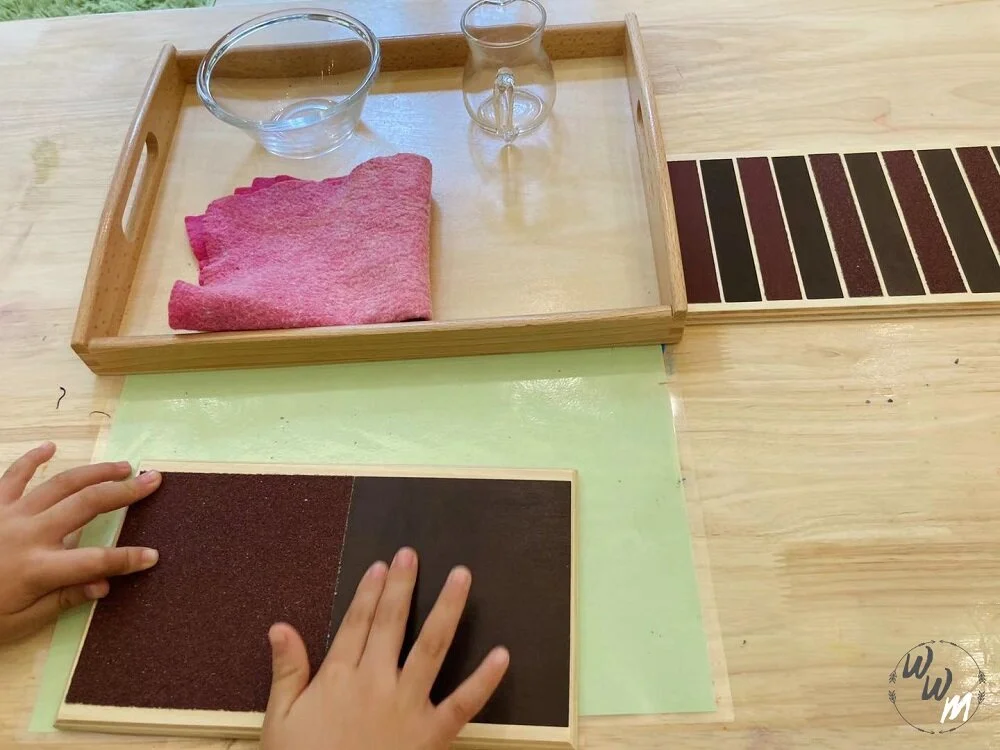Tactile sense
The child’s sense of touch is heightened with most of the Montessori materials. Touch is a very important sense for children to develop, as when children touch and manipulate various things, they are learning at the same time. Maria Montessori said, “the hands are the instruments of the mind”. There are different Montessori tactile activities such as:
Blindfolds: Orientation exercise
This activity helps children to get used to using blindfolds and having something covering their eyes. Using a blindfold to orientate the children is an important exercise in Montessori, as a few activities use a blindfold.
Sensitising the fingers
This is something the children will be asked to do at the beginning of each Montessori tactile activity. The children will be asked to make sure their hands and fingertips are clean to experience the full sensation of touch and tactile work.
Touch Boards (presentation one)
The first and second Touch Boards are used in this presentation. This activity helps the child grasp the concept of ‘rough’ and ‘smooth’. The directress will introduce the first touch board, then the second one, before finally doing three-period lessons with the child. The Montessori directress asks him to find things in the environment which are rough or smooth.
Touch Boards (presentation two)
In this presentation, the third touch board is used. The child will be asked to feel each strip of sandpaper, starting with the least rough to the roughest.
Touch Tablets (presentation one)
The directress will use the sensitising tray, and five pairs of touch tablets. The directress will teach the child how to match the correct tablets by taking their sense of sight away by averting their eyes.
Touch Tablets (presentation two)
In this activity, the child will be grading different textures. The child will be asked to take out only one pair of the tablets, grading from roughest to smoothest. The child can either avert his eyes or wear the blindfold to grade the tablets.
Touch Fabrics (presentation one)
The child will be introduced to the Touch Fabrics and will learn how to match the same fabrics, for example: matching silk with silk, matching cotton with cotton, matching denim with denim, and so on.
Touch Fabrics (presentation two)
The child will use the first set of touch fabrics to grade the various pieces from the roughest to the smoothest.
Touch Fabrics (presentation three)
The directress will do a three-period lesson in this presentation by choosing three different types of fabric, such as silk, wool, and denim.



